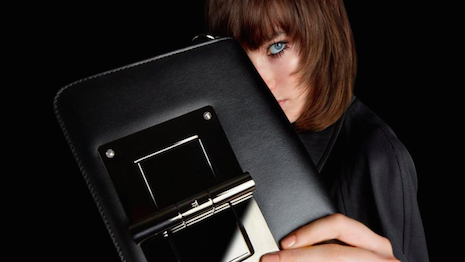Tom Ford has announced that after only one year of supporting the see-now, buy-now business model, the brand is dropping it, suggesting that the once popular trend may be dying out among the big names of the fashion world.
The fashion brand cited difficulties relating to the store-shipping and fashion show schedules that made it challenging to have a collection for sale and on the runway at the same time. With other big fashion houses such as Thakoon also dropping see-now, buy-now, the fire of the business model looks like it could be slowly dying out, while some still defend this retail innovation.
“We don’t think the see-now, buy-now model is a passing trend,” said Jennifer Loverude, vice president of Infor Fashion. “We believe brands are always looking for ways to test concepts, engage their customers and generate excitement.
“The see-now, buy-now model aligns with customers, especially younger customers, that are accustomed to instant gratification and getting what they want, when they want it," she said. "This model drives traffic to the store and the brand’s online presence, allowing the brand to take advantage of the excitement to further connect with the customer, promote or upsell other products, and drive a unique experience.
“The challenge is understanding your customer, operational capabilities and supply network to align the strategy for success. As fashion houses and retailers implement better operational systems and analytics, they will be better positioned to deliver on the promise of this model.”
See-now, buy-now
This time last year, the fashion world looked to be undergoing an intense reformation in the commercial process, with multiple fashion houses adopting the see-now, buy-now model rather than forcing shoppers to wait the traditional four-to-six-month wait between a collection's runway debut and its availability for purchase.
Among the brands that adopted this model were some of the biggest names in fashion, including Burberry, Ralph Lauren and Michael Kors.
The theory behind it made perfect sense: why wait months between the hype around a collection’s reveal and the customer’s ability to purchase it?

Thakoon's latest collection
But in the past few months it appears that fashion houses’ whirlwind romance with see-now, buy-now may be coming to an end.
Tom Ford has just announced it is dropping the model, and so has Thakoon, another early adopter.
In a statement to Women’s Wear Daily, Mr. Ford referenced scheduling conflicts as the main barrier to success with the model.
“The store-shipping schedule doesn’t align with the fashion show schedule,” he said in the interview.
This is a far cry from the confidence Mr. Ford expressed a year ago when the model was first adopted by his label.
“In a world that has become increasingly immediate, the current way of showing a collection four months before it is available to customers is an antiquated idea and one that no longer makes sense,” Mr. Ford said in a release from last February.
In the same week that Tom Ford made this announcement, Vogue reported that Thakoon was also dropping the business model.
Could this signal the beginning of the end for see-now, buy-now?
Balancing act
One of the major appeals of the see-now, buy-now model is the changing tides of commerce outside of the luxury world.
Customers expect more instant gratification now than ever before. For many younger consumers who were raised with this model, the idea that the clothes they see on the runway will not be available for months may seem untenable.
Especially in the age of social media, when feedback is instantaneous, brands may feel the pressure to be able to offer the products that customers see and react to as soon as they are unveiled.
It seems for some brands, the logistics of the model have not caught up with the where customer desire is.
Thakoon referenced this problem in its stated reasoning for abandoning see-now, buy-now. In a statement to WWD, Thakoon “recognized that the business model is ahead of the current retail environment,” according to Silas Chou. “Therefore, we are taking a pause and an eventual restructure."

Tom Ford's newest collection will not use the see-now, buy-now model
But other brands are continuing to embrace see-now, buy-now, such as Tag Heuer, which leveraged the model for its latest watch, the Connected Modular 45.
Tag Heuer distributed the Connected Modular 45 using a see-now, buy-now strategy, making it the first watchmaker to use the fashion concept. As of March 14, the Connected Modular 45 smartwatch can be bought online, at Tag Heuer boutiques and through a selection of retailers (see story).
Ultimately, the fate of see-now, buy-now depends partially on logistics and partially on how many resources fashion houses are willing to expend to make it work right.
“If fashion brands determine this is a model they want to adopt, they need to determine a strategy regarding how much of their business and which product lines or individual styles are best suited for the model,” Infor Fashion’s Ms. Loverude said. “Brands have consistently been challenged with shortening the time-to-market and ensuring strong design, quality and delivery.
“The see-now, buy-now model makes this operationally more challenging to scale in a compressed timeframe," she said. "They will need to drive alignment on a new calendar throughout their supply chain and network.
“They will need to manage the risk that new products will be shipped and available but not presented until the show. From a customer perspective, fashion brands need to evaluate and manage customer experience to ensure that they create a sense of urgency, balanced with the ability to drive excitement and traffic throughout the year."
For now, see-now, buy-now’s fate remains to be seen, but the departure of a few major labels may signal some of the obstacles ahead.
“Ultimately, one of the biggest challenges will be to measure the success and benefits of the new model," Ms. Loverude said.
{"ct":"5YEjQKNGMEJ+tutZX3JSOuEwmE+X1nJS7hh0UK5XoTol5jOljEwZqG5pMbT8gLC+23bupyGDeqTRbaMnEoff5m9LrLoKObAakaNdR5ukQuOw382GoxYHqZaTrnfYaZWuuFX\/9VeFOz1ah64HKY3J3NSzx1oc\/Nw92cDIUbSXgm49vcoIc55vLoxTClIL16cj2KNKcK8U6tagK\/zP4+07EL+xfs7ftyTgjW7vvlmeVqj1Rp8c7OK6dcaUvCj6Vbq5AVpub1FtWEvP0eW08uABIlR9lSUjmJ+xf+3d3fEV6vx\/wsXfugqW93\/2DYNsHAZfx2cRCf8gMjf9eFaLEBFYmtjziqz2XEd11CQH+mE4caK0tFiOfCkeA5RZGL8OtGJlv+8GrVchr+CJ6unK1pftf2ndV\/teYdmbvEBHLVlbNMehsgZTuL64uyNOx0J169VePsa5DsGIxMuueHhwCOOJhLo+5HgLfseijTLub4IXVpJurBSggdQOst\/yTcnoafDxbk8vQcEYPuJIgzZ63UqUhUfTcXhoPame8wovq6mcYkhK7LEH0\/rQM4v5apMzEj0nnKXZPGqU7ghoeDiasxJmp0RyQv6GySr9RrdOYlt2hYnXW722K\/55WtJcxNhNsu5eL5L9sj1Uo6GfhKOf7j0DPpHkUFdtRP\/KZnqetag80Vu+3St9VHsGKhnKMOYceb66\/orj+6vICgb4FS5bvrofkozksJwHhpVVpABsf1jphvPzMczdFOvmDmbBU\/I2bLtf\/dMnjlhJN3VakHI+SAmDaWnNXJW5FGcNxMBDyDjLp3vaM3tAxDctTwWAdxWI3cjMJPornfZnER+n3h6kpD8sLcCcYSFB4Ov5DsEmas18pyDeK9FjBuwvm2Ho1WB6KcqRbw2\/OUzKfQvMGYMUWhOddk14hmdr9rKyj4sRBrxg8CpzCQEvecZkj6MRjiuyo3Sno9o247TQ9zOfJPTwJmzgLQ4khvrBwCVSMcASdXnr1OAkkv0j0L\/cvhD7aZYbiwSO73OzojIjU\/cie3tJQSQschY4qRzFrbWDn+i08+TklvnEu6UiHrFYURryLXExgyeHVECpXxxeRfGMqJhzynFRCi51E8aaW8bVO284qK+8gARSBp5d76XOoz20eu1+0oTLk9yNFR6g8D2IdL5fH+5qSWfQ6FEaT34aXOS3NzGpylAJARm02yG0LTh+eolf2\/+rzrOBvwYC94HLx7Q36pRpyZ8PSJVjeZCzFYN16gr9bCUt\/GXDvnJNtzw+b0XOjSiiMoffsjv4S9KJGhM\/re5tMlLe4QPRTZOjHRx1Be4c4UtY8M63YAVNLTwXVEZAszKZz\/s5Awn\/4+LVXel\/fAASQAu9Iw2brWKR3RT1SxU9+BBlrE4cLBwWAVigiojSdInBe7oLoZo5cnQPSHDvmmFri3D1zLsyuKzB7UP4xCFnh+UBQndVRMJ\/ZOMiOwESxBU8TyiFHeB6PfzKgkzLA4WseF6quzyW5Oj53WL9UV7lcT9g4Ir2uVT7K4Jbn6nO1akx+G39oAu5INc3vr4cNUCO6aTXC34uFppL7kx5naI8sz0PY4oHrix9KBTGQbzE6VoXwUhi2Q3oCw5Z3tXBOYSLY6QcAc9HPyi5p3xLon7V3W5pi\/ojGvSfoC0wGGBMSjn+McmZqyUnpAg37MNuZx3USsnarFT758XFdKM7NGyu8osZDwsoCpv939zx6vKfoHE5oq05j+UShWM6+M9GqH+gx1oWELF9xhEsOZhoOmVCMZQBOi+wvRwGdrUAgHZ6SPOJQBVNlELgxrlUIGImFI0bYtX8dpuacB1n8yVl042286TUfmsbTq6HIvvuDANVgfxDCqrQKmVuEeAPPwTagQ5P1C0z\/wefGPuwd1oxX7xEpKzsBN3b2MqxaPJgnORFv\/ZxOiZWEEOuyeXCyLzl+7lbWGzb8aopZ8JhOVym642szfiLM3BhD5VF6p1Dw9v3S1lM7pV\/8ADEFOCT2sh2WQYD8OWGQ3EQlDkK7ehicD3qFvSmUJyEiWFuva62ozv8XAVTwbxpcN\/tWaFa4Iva3u2jZG+cN2ulE3uJLImqlrCBnjdc1nsXLGX9z4LWGk7Em+YjOA1dXGlxWI+cy2V+CWNP9OiifWyNMY67kBQD0TLRIzb7HDfh7M6gDQXTroMvpyYZNZMVlqqNLGMZB9jAWgDpBEUbAl11FA0KBlujbqDVnhv0DALQKv7MD9k4VuRuIzcJfi2fUVTA1AmalfUQQOVZDGucw93uNbtFHm1epJqtxk7cVXjCFa\/mi3UoGul\/l+CxiS7BlGlwwNqDyRxMCGqpwFB1YxcgyQ0FNHeYQv7919cNobEJO09MxsXhpiqd2ynlAwBXMsi9s84RBHPm+lYfk1vQbyY0sJXPOOdGGsN3E1KBHU86zdkYj86qBshqk8AXalmfcCLMuHDN+6beFvj6B9ACyK0V1gXMJb18gaNGZ54NY0MAjOHfYD\/H6Y\/GJizUTa6zi9lHdkT7ufyFkBcVkHPrTd9rbspOVybYyeMhqJ5BvCLb\/vupqXtTtWlkmGaphbpQ5yJ2KhjTTlt3ij+e+twPVKBh0y1LIkiXtWexLWkzKy4bpNLm63yN1F3k238rNBfcLv8TNCjArfhBxwvF0e5t0qaUYGljf30rMjjRlYY03WiY8YPE+X1Y+SeTSE9+8CU7EkrjQIA4bdgXYDq8vxCccMC9Ii\/nO6Fkx06ygyYfNil7gaXvDIytReD3yrniuuEZ3xH\/tiZgKOOoVru1XnFLP\/LQJuTMWmbxHbWFTt0JZnmQr9we3HSLMVUSiO7RbneIZWE9b173QNn2Rom12FYh3rNw4aZW6Sa6A+7+SattIk\/AY0tmJATJJf7hlspb9+afurN\/sjeJrWhqvjwueqy5AZ2cZqCGKtqK4bH6vPqm2wbYlwWaDgifWIdiDHsQieM7t+KoyO2h9qvNpX9Dd3jtpJrnZ\/Me12jx6Cr5WbiJ4j3VcevnBV9zMqD7hzZ2h\/kfAKmPWcBga5waIer97pKpk7Aj\/MEY1Maurlq4aAqzvS5leBqXRPpmJClES+B2K9FedggQjP5TjnTt42JQF57S9gXJNY9AxRBGOnxbEnydBYwVTGGBFqcNUXMsXGBmV3SA6Zfi+uvUyEUITx0Iax6EHE80k1C6qshboHHRs4Wmof\/RhyWjFX2z+6CAMGXW9DgzuuQMAmpC8amJegtEHJ+VFSTCteGo3n6b9kjgCVpwm8rkwjSOpIuPz6n7Uwqu7HHv2F2rVjahZTZf2\/fl4Gb\/b0ZlXrLSvrOYj2wkj01HxuayCRmJmJOuCWhyW\/w1KJLzTJGKtSAhQGT5rmpfZ0ezHzSVi1YCzPq3zyc8w7dk62L39Dgg8+QXwBiNKOwLkzi0tT6JETRHaJhvU\/coWvXfMeY0DYvTADUrb14URU0xanTgh\/eZ0EIG6Wsfsf7+nCRzYRRkG+dCbBy7fO7T6qrRDJ3j+XKVo\/SzjuCAL2pUjhZ9qDlQRcyP7StjQT872OwcgLga44IX3Ne41siKnmvuLwhdab8Hdt0\/AAC3ItCsWEAQcHBUU55L7N8KgEFyOI\/jozgt6IsBto+aYED\/sL4zheIdR1TYzKiizzdkDa3rHanHHPFkMLph+ZIjEz7fFiOhnCnMX+MQQPJ1SLQatA81OdACthPuhaqH+6fxJYd\/My5m+E5WBIf\/pcK6D1Sl\/xhmwXRDbRf7aRj1dKTIJpdAYpJUts4Og\/6Rd77ZCVgw1Oejmvr3wqGfdwPHJdw9M3UnB8QWar\/p\/8NwBOmJ50UICz69+RFtf8lkdPoAerzrOXyv8xEdPTO1SxjKMXlO2CRxjPgNp448AejR9L8dRfYWeF0E6KYs3dP+r36FeSnHakrGSBwAKRliXIu+Khi4n3rKEvTQ\/R2d4efejfqDlYj6daipHGVUc6qIye9gaV2E10Di5wp936N\/KRJmhnJ5YfGQ82GYCTiASGuhSyUP3AvSvTIhIHRxsFGEBVxi1HaDzVMe83qYi7PiOBHz9zIs2Wm+piWV04lEKT6qIkP3OsQs8ZWNINjMpBtogZLr\/TrNLrUV9vxCsBXr4GD1O4pMYVM+FyQYJlAsbCLDzI6FDPJbs2Lq1k1uNE59GFFdDV0FvOk8jVohW5QKrjKpSsPz0UCXncKrD3Gn6lE2BbVoZHuBjh63kwJA+Knr598d8LdKd9HN73Jz8KhewavZTo+vanUo3GpBJI9hlA3pZ9FJ5Lem\/kOId2oZKPONIHzh4CnCpvHpip3GnVFA75BYxeqXJFOtVeQ9xycHrapVq+HlpK9in2kBsePbah1QaNmTxg3G44guVOwzVbk1NDwLg6TwzzgzyvLagHs+vtWilXUU\/zhxfhxyTdBktl0QhAVWURZqSKAgD3uEmeJfwqavzBSIekoiRpDjPH7uiyikWX2eeb3TPACUs0XiZSO\/48J8dL2zn25+euJ\/71\/DL\/xTX528ihQ\/Z2tI6bvF9D0oTKh3hhk2eIICURubifNasR3F\/vvoSdM\/la\/4xSVS8uzDatEroiEzNMQ7A8GUxbyda8VB+lG4RXJzSR6fnCb2QuX+HLnHqCwzlj78aqjtymlG1CwGxPAQjG1eCnTxg2yEXQVsag0YmrAQOxKHdsFvyN1vg4haqmpWBVD5OAzBdH9XV47po7nW9JyHd5hbmJ6m\/YCMrIqAogZh5a3qIC3C5Q2VAX33M6lLPMi3MZhchiJXnMFFXJT49nryqloqWE\/18OkX7pE3KejMEvjd1oMQwLxOe+xe7BC2mjF02JFNtCJj70B8MDXLiUzuDrUIjH9NTCzPGBjzHaDCLZHNMfkxer4\/wmX1+2jUuFnRj8exenJIkYTnRtEh+Epepk9vzD4FaMoWI3dyJ4pb+38dA9OpG9lZjm9pvEdykIJP6KEhCSrLen92dZ2\/nuX5wevJFvZLEGBq7UgfVZs7UL8e\/j2GJPlbyihArtUpgrsZdEby30mwRS2eQg03ZpJKpetnZtBHPsL1FGUWxnWlXoPQlpNZqNlCVpuMxtHKTLLct8eCRfSJ0PfQEnudL3ig2+KPNA9R1HCIvzytej+sBpky5PXrZDv6CSSxeDVh\/nUJQqKuE2v2tWE4xEbHHGq5aJZJCFerUqBu0M0VLStMCICI3FmXCD5DIc2Ud0VqYa4sisMftupUkUFBJieJ0Wqxa4Ip2h7UoX+s3xXKabS+oHzWYeNEnWG1XKHKMXn1TnHC9IQWSba3cvp5FTCRNBT60xOkuOfyhx3TKrEFsFOrqbqeeYp\/qVHyxIauGZEbdFZ8sSGWB7Z6W8RWbFjf4L1cmflA5LJV0WkCNncHicpgHSqCmzCnyuIBmbFuQJ8VeqGF5S6Gz9WSSFG1xnrW1BFAnCDOfM\/0GdfM3EeHeXgKXJGriRvPRmF5o2sPgUJ6\/yNWSxREPSffT1FAms1mO5aWgKnv2ukcNKPr9PhlpTIleEWE+CSoP10NWHYAX\/MKDVKjGj4vw5h26g\/BpFdq7i5GfWDULPYU28+qmy125rK8fbCIA37WrdggDDCHZ9znTIUPnh17E7TZ7z5dPPY6zGOJO7M6mr6zAeTiwRKJ9tW1XuMN7KDdOaS6GOg0UGB+oDUKTxgIyMk17YqK2KoLwBZdahH0\/zjfWX9tE1LzeGVeApg\/BOF8PmIbg570Lzk89rMThk8U+EggDYvFjc5hzbIqy0Cqm9u7eDaX5XF2MTAODn9HHLF7xdvapbOe09B3uZE750R4R7FfUtPg7VqyXf+xhAju5B4r9yWzfrAOn29Y9nvOVm1zw+uIJONfvjX8LQ\/rhNiFhYJ0VtslXraF4P2SUH5jG8W8RVx5OpircGHRoT4yJ5N\/OklO9SqjFlDp4lfIcKOELEme0wOpCBqblEX5hgTKMJmMMgyimhti1YiH3Bwmw\/NrZefHJBx2m276fFyn76Nxwq0HC2McyCx7\/LH\/JGvy\/5w6UMRm7vaXqIYjzjpMVoYseqboHEBxh1dyUmv2e2LfOh7Sjai6eCo7EPe91ng0fFLslQL03AXGbTqAqfsSPhYWzGPJNumzVWXvqmbXv9ANz2Eab+xMeBqObK5WmSmL6ydACtc2RL84JYcfGcdsFQxFjQvxXWrURg4MAL4QxDiG2ozzXcKSKKj\/md+WO4saeCO6V8Po1iRpKPstXZVm2o2Y0805hnm6g88+m5HS+hzUTqH8q7QFFkLNE97YNULqzMaZ6r7UFJ0cFPPeG9XEbdg0JnIhxss0tuP54I550EJHtSwstMBwS\/5NCv8\/blm+McQtSXmHt46FvtRzV+6mCTaE8MdDmLEY1dSI\/yp8AaV+Y7Z9Y8naXBReB\/1Uyx9sC\/RCIYMVdDUCXYVn5DM2TXLSR+au071iv691PFTQqNaRUTHfjRvV5dnVN9oQa2J+XGZ43VVe7KN1L9wcHmcjyxgnK1Zjk90OOoPe95VEpABZ85FhwGE2w1eTzeY\/3xNtrculBx7Bhg3kszyNIGPEwpkJ3gVm4UIsw+tmbfQB\/a8Wx9yuSugRnUUPnYmakxOzO7lcpLb55LOPC1tJqG094tOXcz5WtN6yowSYNMYc4xE9S5U8YMfgx5G46AQ9d7Y47\/1uH6JVMWZ7CAN8\/0XPCQIev96SUS\/7sRXjvIifIl8nSlk6jDB+xJDg1Rc\/ku+rV2FzAORm3Azr9cEuJ0ONgunJEmDhgR6a2jSakuRs3JXQZ2q00nJgV93XPDjxg9ddKRXhNJO+\/tmp7V2IESCIeMoN0Ac0UEZBwrxq4TGiXyw5vhA8ZiUt4BebGSyWKmxlRzlbZpa8YdTHttlibskRSOpAuRyTjheq8y\/zKCKNkMnxJKEI7EmtV9D2yePrQwdW80lE3n6xTqC6liBE3BtbN6q2y5z4oTdEsJAWkRX+jEMM3GtXvO2jZTwx84pwgHg1ju7vdRsrmSmO\/T76mmzu0TxJESXfQQ3uEoZCzgRuUXyKsJ6tz8AwZTamTnSA1CEFZE4cQqudvzoUwA\/fZmFOWDXjKxFe7VcoETk9f2TN9Oo\/hRCbGEOXYXmiGGYxkwZ4t5iZgor9KCx67Ds0BJRIsifmvK9gSaVb17aEcg+CLp7IymVi4fezLi5HZekuCAN\/LUbGFBL\/KroVsw3bl2Ga06aSw6GUnHkSYj5Ln6Eb75CXYjNI9ZA8FE7Foo3B1CF0agKDgp6Tta7Mv7CZboL45bm0l5idCCy3N4phQPlDrVIdc5knSvKeB00By6pZyt1jnw4ka13DbkiCQb8dRY95\/ucvhcZZdE1j41cXKyHWdD4KluCUXlIe10pceek7pg7DRz1O2tblGvW5D\/0bXNpYOjijm1HslTgMhDA7ouzh3Vs2IU3CMOpBrttEhs4Dgwaus5WefAyTmyU0GJteJgZ03zIC3spWSrUFTco7xpNzm\/V9FQCta6j\/t1zlcWvMTzM7rAta65rIkvGWAe9e8tg1iMHXIoJNY2tQnsSVARFHxcPiRYyZ1Uestx7dvPYndUl6q8iDS6ZNcAVOsgvfkGccDgmvDQZWAGODM2cKyIMR3yFS7px0898QYblnqrKb+JAHRjQffNNRrqoK9a28BWo\/L993gzugYnxMM3f\/vTZG9gO1XybEHjIpxB8OVipyZKdhKwQspiXSPTE1zQ\/u7f7VObcWT8kYEc4Eo1z56xobuHWYXTPQG234+nFQtlrCxi\/9TPQaML\/pU7QvIz\/RjbLMTgKrthmlIYCW32BQhDeTffDysSP9WcekzFrpW+olal5bAvNwS6iAxf8QbG+GfYE6ca4p3gEMxCnDzzYGu0fBmioxoen0bv8aWoxpbThgfEJqmv5h1KMEDcXNenCHP6SbP9\/8Cf5Y\/Xui8OW2y+JbLsPJZJPIEZrfTOf8teAPd60UBMBk9uJN\/jaR7e8gdEA8kVjUgEqOEFc\/vSAPAKUpJWJnKBj2bHfO\/St83qNLKHul+4lDXXbKCg67U1uHzoeyK5eJCBUJTPyi\/BsloJgU7dgKhe7\/zOCelasAkmOt5xQjhALN7c7InclFwlKhnpvlUSuXFEFb+DiP2xLGx8AZj3kHldRIDTytiqjTmnocynXJrkRTn6xcHNxKipyHRImLGB46BM5\/7KT9kN+Z+LBPD+WSZPiaufjlfb588TrKdiJ3OTD9Sb8bZIXj+EqIe6LwoOj2R2rgS5W8LCcjg\/1l0bkaZNCSJmRR\/KID38r8FSddADOk\/VEV61qBC6JYfqGn6Iixh2UfS5IFq\/HIg8A1Uo8eshTWkgXrE\/IX4oyN4R31+XR8kLPkXtxqJhajbociqTsFEIR6bl1dILpELX\/mWSzTIb+KbpjVPG7ygP\/pCs5WMIxJdPXSJeAXsCiAaiYWZiXCr7+61W\/QZySXtU6zICfMB8MPvo1MicxBOxUkrv0DmJKOMJwqIZsVg1F+ieL\/Inbo6fUthUyN5G0sa+JdCCL6L10dduiDlvxL74Me4r\/BMaYLrJEVfXSWjcQ5CtydJSMniUQu6dZ5Jn+g62QRNLkESxV7cj0ky5Mrp1ImP3L7wwbc6UFQUpWEYZQvUu1RuUJ6Vh+KdkwMLHg8Fjs3Vaj8vkNBvNDabTifep9Kqm+tP5xaqWwBwnJ\/fYd4lYT5hcYubrk8oC6w7R8KuQilJOHNC7PfxqOAKcytDEnIgK59EzbJpeMnEa5bY3hnvus0pFCKIvoYi5sI34febhaqjk+6zgcN7uRUZvWJ4b7yATAWx9uw3f8nTBpzE66K6B477JxQwTQLQr1gAE1ojMuvy07G+o8sPUo2tJeSvKDRqNH5GhQ2pzQPkeoAfE57XxSdQijziPiTdtiJm7kc0ZSFvff0Cvx0wZiUEIPsPGzqcRXzetTHesQh3FC0pylQkr\/\/kqQwOsBDmBByuEkENluyjCS4ycsVB5h0kX7CF0XzUZxME7IO5aPDY3MmV4oG3o9cG4xWnDRfVNeNi9nuJer4uvF34xNE\/tNwLPliAGpMVUNG9IRdPqHgEe25k0kU1xxypT2J5cFh+XmxNc\/mN0v7se0U0sAYN7Fhy4zNprfWJVxLXA0EvuBDt0+aT4AFpCyHapmYjhQVzhZoOzk9u2g50B9zszwyu6joNKxdejas4N+fQRAvDN1pb1W2ELBX5wvL+yX\/2QDsg8166uQdkwfPUPv0xzOWxTkZnZK97GbFzNsSCqgDHwaDbWGiaLhaJPoMcL+L9BPaGqapOFt77k3Odx6LPa0ncJhXsb1cCvXu5edsb7efgUQUBtM\/Fskd+PKRcpKc81zlB5Hla7ZyQ3aKU9S9lTssHtJ+fakL0pH4FtGNZ7rrdtAC1lfHZvMQRCHWKVez0sYa1eceBHiGKePNNB1mzBKODWg+QMRcriXSaed3GhpVRtUKBUnh2ZhvjSO96XEX8Cy5aDDMV7OFgUBUBsC+7LoEcqOuRzgD4tf+7F5i0xq46RqpD33\/MzMXfkHGnJErOnnd4OsY59DiznnxFJSDIZ5432F8X4HG6rdOqffj9thSZhy8aJCUgUu8D9jBg7s3DYJMgCMVa1lfiuue61sP1rt5p7CIFapqTQsQ060yEVrWtkjUcDvYUvaYNGO9oto25g8Too3voqq8LoqcdB1LzP5Ip10zwRgYG3MiUJtD0m530uivyF8DAMqowdOtdcnJeih\/y68hOP9jP6AfYSuR7ycOg6d4lpykmDrZkb8bnDBxgKLiMZ+SfSR1oWPwTrurajJj\/zSldd9J4x2uLOeFzIu8a5V5HrjREp4CxzLiipYIGLOl8OyCBMeUvDUYVlk4zniRpvL0S+JFPinF8vdHyn92O73wboBQbD0uLjLHBTgJHI96ifMt69hlHy3eehT26XQ1EMV5L3g0p52T07JhYZ9nUtSDrAG1O6y6ZUdgW689b0aQb9k09buXiOOBRAGY3dgQQ4\/3HlnMMuc+zd6hR\/JPTVdG2SyTfF1Xnfe5f5VJ0F35\/ueuKivxOWvmQPJYs8A+9G9xxGgMXRK3tIHJR6KZFpUtpxZsxmfwUA3yRKVPN659AvR6EnH9BkjX8UgH\/9ZBqWoGUdgnB2YdpSwwoHcYuF5TTlKwQe3QSIb7YWNwN89OQXxgdvF\/p9MLGwYobVG30Du+jdAkz76nQdr833aZTqoCzTmoSKYxOKCl\/F7sVb\/bQTojAQDXRRPwGh6vN19IdShpcHeWwOxymy4Zfo2PbZF+nvNmknf9N253TOHV8odpooVacGpyoKSde2TvoAt9jxrkJWhNhsp+Zqw8GSQUGSI68FE6i6g2nkkvIc3G08g8nwm7MITk87nyULHnNOFmSCmKBevBgnlf4f076n90wu0j4uJdBMyS+7nsmN3ZzfU1rmeyB8LRZWppLhisau3tRoujsnFWpWiVT\/29VTZazeSy\/M530YGCixAPXECy+x5LkpqXuExX5Ga4I3e3WQ8I\/6NM8fQMJtnvOKbaCaMJrVSbRmufSeS2aBv9gkx3cv\/Suv3UzA+5BGDY6VTHiZk0PO5\/TbttxhxKpVNM5MPx98VbYqUheJILpHKtC3ftZ63Qkj8sOFSEfTgzH+2+MUY4YSecfmLhCyCw+aK3mG26+ZQejvVZOd\/9W0OZjytkIAN2hBAgJicfl2Sru8+xO824QPQ=","iv":"7667643f1fd65970af5f1887dfae2018","s":"0867a64a45a6679e"}
